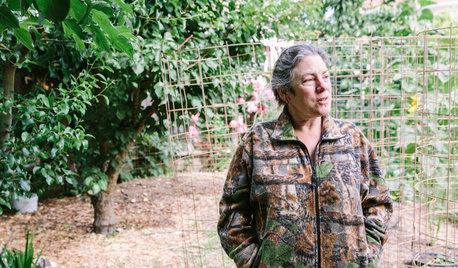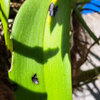Contact lens wearers warned about eye fungus
Some doctors report rise in difficult-to-treat infection; CDC tracking cases
ORLANDO, Fla. - Alison Bregman-Rodriguez felt as if lightning had struck her right eye, or someone had pulled skin out of it. For almost a month she could not work, drive or watch television.
"Id never felt so much pain," the 30-year-old social worker said.
It was not until several doctor visits later that Bregman-Rodriguez was diagnosed with a fungal eye infection, a difficult-to-treat condition that can cause blindness.
Story continues below â advertisement
Some U.S. doctors are seeing a disturbing number of such infections in contact lens wearers like Bregman-Rodriguez.
She and 20 others have been treated so far this year at the University of MiamiÂs Bascom Palmer Eye Institute, which typically sees that many sufferers in an entire year. Twelve of those cases involved patients with contact lenses, while previously fewer than 2 percent of those infected wore them.
The federal Centers for Disease Control and Prevention is watching the situation and said it has received reports of about 50 possible cases in 12 states this year so far. But because tracking of the disease is spotty, the CDC cannot say for certain whether cases are on the rise.
Singapore health officials noticed a spike in January and discovered 39 cases involving contact lens users from 2005 to February of this year. Cases have also been reported in Malaysia and Hong Kong.
Why now?
The fungus, called fusarium, is commonly found in plant material and soil in tropical and subtropical areas. Without eyedrop treatment, which can last two to three months, the infection can scar the cornea and blind its victims.
Symptoms can include blurry vision, pain or redness, increased sensitivity to light and excessive discharge from the eye. It is not transmitted from person to person.
"The question is why all of the sudden contact lens users were targeted by this organism, whereas before they have not been," said Dr. Eduardo Alfonso, medical director of the Bascom Palmer Eye Institute. "The fungus has been around, contact lenses have been around  why have they formed a marriage now?"
Alfonso said the only common denominators are that most patients wore contacts and lived in a warm place where the fungus grew abundantly.
Dr. Benjamin Park, a CDC epidemiologist, would not identify the states that have reported cases, but said one was a cold-weather state.
"ItÂs more common in Southern states, but itÂs still a rare infection. WeÂre talking one in 10,000 or something," Park said. "The fact that weÂve seen cases from cooler climates makes us a little suspicious."
Alfonso said contact lens wearers should wash their hands with soap and dry them with a lint-free towel before handling their lenses or touching their eyes. Lens storage cases should be replaced every three months and the solution should be changed daily, he said.
Tricky to detect
The doctor said the fungus is tricky to detect because infections in contact lens users are usually bacterial, not fungal. He said diagnosis requires a lab culture not all doctors are prepared to take or read. And the fungus can be so slow-growing that it takes weeks for the culture to come back.
Further, the medicine used to treat fungal infections is not widely stocked by pharmacies and often must be ordered.
However, Alfonso said the chances of blindness are very small if the infection starts at the periphery of the cornea and is properly identified.
Bregman-Rodriguez said she was "a clean freak" about her lenses even before the infection. She is still taking medication to shrink some scarring and said she will never wear contacts again.
"Dr. Alfonso told me I was a lucky person, because most people probably wouldÂve had to get a cornea transplant," she said. "They were able to find out what it was in time, but that even scares me because so many people donÂt go to the doctor right away to get a culture. Imagine what can happen."



















varmint
Ginge
Related Professionals
Ashburn Landscape Architects & Landscape Designers · Birmingham Landscape Architects & Landscape Designers · East Rancho Dominguez Landscape Architects & Landscape Designers · Deer Park Landscape Contractors · East Haven Landscape Contractors · Elmhurst Landscape Contractors · Lake Saint Louis Landscape Contractors · Welby Landscape Contractors · Wethersfield Landscape Contractors · Albany General Contractors · Clinton General Contractors · Decatur General Contractors · Phenix City General Contractors · Poquoson General Contractors · Valle Vista General Contractorslunaticvulpine
meer8772
dottyinduncan
alexis